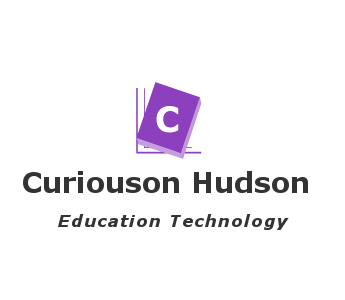 Education technology, or EdTech, has transformed the way students learn and teachers teach. From virtual classrooms to mobile learning apps, technology now supports nearly every part of education. Students can access lessons anytime, collaborate with classmates online, and explore interactive tools to learn more. For teachers and schools, EdTech helps track progress, personalize lessons, and reach more learners.
Education technology, or EdTech, has transformed the way students learn and teachers teach. From virtual classrooms to mobile learning apps, technology now supports nearly every part of education. Students can access lessons anytime, collaborate with classmates online, and explore interactive tools to learn more. For teachers and schools, EdTech helps track progress, personalize lessons, and reach more learners.
However, as more institutions shift online, reputation has become just as important as innovation. Students and parents rely heavily on online reviews, social media, and digital visibility before choosing an educational program. This is where online reputation management (ORM) plays a key role. It helps schools, universities, and EdTech companies maintain a trustworthy image and build confidence among learners and stakeholders.
Why Reputation Matters in Education
Education is built on trust. Whether it’s a small online tutoring service or a major university, students need to believe that the institution can deliver quality education. A single negative review, outdated website, or poor response to feedback can discourage potential enrollees. On the other hand, a strong online reputation shows professionalism, reliability, and genuine care for students.
In the digital age, most people research before enrolling or purchasing an educational service. They check testimonials, browse social media, and read about the experiences of others. If the results show consistent positive engagement, timely responses, and transparency, the institution earns credibility. This is why ORM is not just a marketing strategy, it’s a long-term investment in trust.
How EdTech and ORM Work Together
EdTech and online reputation management share a common goal: improving the learning experience. A school or learning platform that uses technology to enhance education must also use it to communicate effectively and maintain its public image.
Here are a few ways they connect:
- Transparent Communication: Technology makes it easier to interact with students and parents. Quick replies to messages or reviews show responsiveness, which helps maintain trust.
- Data-Driven Insights: EdTech tools can track feedback and satisfaction scores. When combined with ORM tools, these insights guide schools in improving services and addressing issues early.
- Positive Digital Presence: A professional website, active social media presence, and consistent content updates strengthen credibility. ORM ensures that this presence reflects honesty and value.
- Reputation Recovery: Negative feedback is unavoidable, but ORM strategies can minimize damage. By addressing issues openly and providing solutions, institutions show accountability, a key quality in education.
Strategies for Managing Online Reputation in Education
Managing online reputation requires consistent effort and awareness. For educational institutions and EdTech companies, the following steps can help maintain a positive and trustworthy image:
- Monitor Mentions and Reviews
Keep track of what people are saying about your institution online. Use simple tools like Google Alerts, or more advanced platforms that collect reviews and feedback from multiple channels. Regular monitoring helps you act quickly when issues arise. - Encourage Positive Feedback
Happy students and parents rarely post reviews unless asked. Encourage satisfied learners to share their experiences online. Their stories can balance occasional negative comments and build trust among future students. - Respond to Feedback Professionally
Whether it’s praise or criticism, always respond with respect and empathy. A calm and solution-oriented reply to a negative review can turn a complaint into an opportunity for improvement. It shows that the institution values its students’ voices. - Maintain Consistent Branding
Your website, social media pages, and online advertisements should all reflect the same message and tone. Consistency builds familiarity, and familiarity builds trust. For EdTech brands, this also means highlighting transparency in pricing, curriculum, and results. - Invest in Content Creation
Publishing helpful content builds authority and improves online visibility. Write articles on learning strategies, technology use in education, or student success stories. Quality content not only informs your audience but also improves your search rankings. - Address Misinformation Promptly
Inaccurate information can spread quickly online. If there are false claims or misunderstandings about your program, issue a clear and professional statement to correct them. Staying silent can make the situation worse, while proactive communication shows leadership. - Highlight Success and Innovation
Share milestones such as awards, partnerships, or successful alumni. Positive stories remind people of your institution’s strengths and contributions. In the EdTech space, showcasing innovation demonstrates your commitment to growth and relevance.
The Role of Students and Staff in Reputation Building
Reputation management isn’t just the responsibility of a marketing team. Everyone involved in the institution contributes to it. Teachers, administrators, and support staff shape the learning experience that students talk about online. A kind instructor, efficient support system, or engaging course design can lead to genuine positive reviews.
Encouraging students to participate in online communities, share achievements, and post testimonials creates authentic promotion. When people see real experiences from real students, the institution becomes more relatable and trustworthy.
The Long-Term Value of Trust in EdTech
In education, reputation lasts longer than technology trends. Platforms may update, and tools may change, but the foundation of trust remains constant. A strong reputation leads to better enrollment rates, loyal students, and valuable partnerships. For EdTech companies, it means higher adoption, investor confidence, and brand recognition.
Reputation management ensures that every digital interaction reflects your mission and values. It helps you maintain professionalism even during challenges, like service interruptions or course delays. Over time, these consistent efforts create a culture of accountability—something students, parents, and educators deeply respect.








